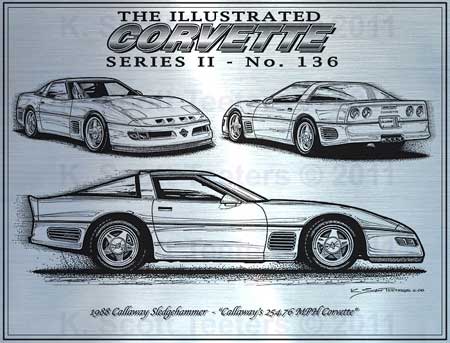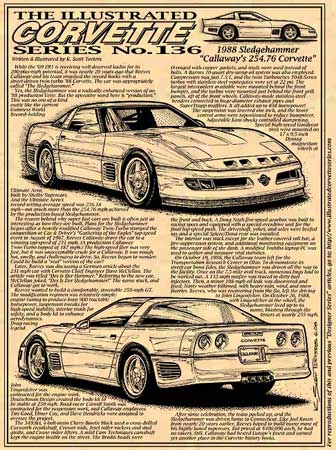Dateline: 8.23.11
Not only was this twin-turbo L98 Corvette packing 898-HP, it was DRIVEN to and from the track!
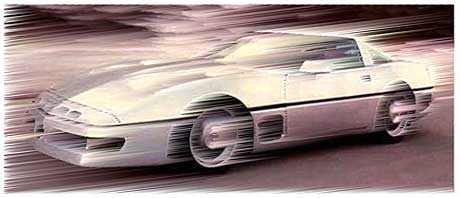 Yesterday we told you about the rather lackluster turbocharged L-48 ‘79 Corvette. No one was going to get warm over a 280-to-290-horsepower turbo Corvette. But nearly 900-horsepower? NOW YER TALKING! I covered the car back in June 2008 as Illustrated Corvette Series No. 136 for my monthly VETTE Magazine column. The story copy from the article is below.
Yesterday we told you about the rather lackluster turbocharged L-48 ‘79 Corvette. No one was going to get warm over a 280-to-290-horsepower turbo Corvette. But nearly 900-horsepower? NOW YER TALKING! I covered the car back in June 2008 as Illustrated Corvette Series No. 136 for my monthly VETTE Magazine column. The story copy from the article is below.
What’s amazing, besides the raw speed and power of the car, is that Callaway never built another one, at least, one that we know of. If they did, the owner kept it a secret because I’ve never seen or heard of another Sledgehammer. If you’re reading this and know of one, please let me know. What a difference nine years made between the ‘79 turbocharged L-48 that the Chevrolet engineering department built and what Callaway made. But to be totally fair, Corvette engineers aren’t in the business of developing mega-horsepower Vette engines, and Callaway isn’t in the business of designing mass production cars. . So, we’ll give the Corvette guys a pass and kudos to Callaway! And to think, this wasn’t a trailered speed machine. Callaway’s team drive it to the track, set the record, and drove it home! AMAZING! here’s the story. – Scott
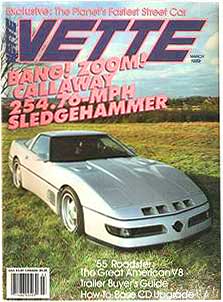 While the 200-mph ‘09 ZR1 is receiving well-deserved kudos, nearly 20 years ago Reeves Callaway and his team smashed the record books with a street-driven twin-turbo ’88 Corvette called “The Sledgehammer.”
While the 200-mph ‘09 ZR1 is receiving well-deserved kudos, nearly 20 years ago Reeves Callaway and his team smashed the record books with a street-driven twin-turbo ’88 Corvette called “The Sledgehammer.”
The Sledgehammer was a radical version of an ’88 production Vette. This was no one-of-a-kind exotic like the Ultimate Aero, built by Shelby Supercars. The Ultimate Aero’s record-setting average speed was 256.18 mph – not much more than the 254.76-mph production-based Sledgehammer.
Plans for the Sledgehammer began after a modified Callaway Twin-Turbo won the Car & Driver “Gathering of the Eagles” top-speed event in 1987. Reeves Callaway drove the car to a top-speed of 231-mph. The car was fast, but it was rough, hot, smelly, and difficult to drive. Corvette Chief Engineer Dave McClellan joked about Reeves 231-mph car saying, “Des Is Der Sledgehammer!” The name stuck and Reeves got busy!
Callaway wanted to build a streetable 250-mph GT. The modifications were relatively simple: a Lingenfelter engine to produce least 900-hp, suspension tweaks for high-speed stability, interior mods for safety, and a body kit to enhance aerodynamics. Deutschman Design created the body kit to be stable at 250 mph. Road-racer Carroll Smith was contracted for the suspension work, and Callaway employees Tim Good, Elmer Coy, and Dave Hendricks were assigned to oversee the project.
The 349.8-CID, 4-bolt-main Chevy Bowtie block used a cross-drilled Cosworth crankshaft, Crower rods, Jesel roller rockers, and stud girdle, and Crane roller lifters. A mild Cam Techniques camshaft kept the engine streetable. The Brodix heads were O-ringed with copper gaskets, and studs were used instead of bolts. A Barnes 10-quart dry-sump oil system was used. Compression was just 7.5:1, and the twin Turbonetics T04B-Series turbos with were set at 22 psi. The large intercoolers were mounted behind the front bumper, and the turbos were mounted behind the front grille. Callaway-made stainless-steel headers were connected to huge-diameter exhaust pipes and SuperTrapp mufflers. It all added up to 898 horsepower!
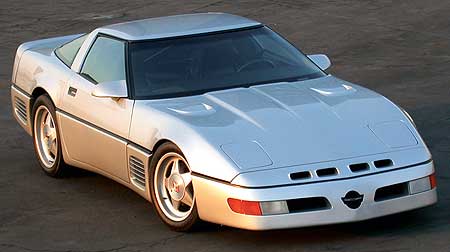 The suspension was lowered one inch, and adjustable Koni shocks controlled dampening. Special high-speed Goodyear tires were mounted on 17 x 9.5-inch Dymag magnesium wheels at the front and back. A Doug Nash five-speed gearbox was equipped with a special overdrive unit for the top-speed push. The driveline was beefed up, and a special Spicer/Dana rear was installed. The interior was stock except for the leather-covered roll bar, a fire-suppression system, and additional monitoring equipment on the passenger side of the dash. A modified Toshiba laptop PC was used to gather and measure vital statistics.
The suspension was lowered one inch, and adjustable Koni shocks controlled dampening. Special high-speed Goodyear tires were mounted on 17 x 9.5-inch Dymag magnesium wheels at the front and back. A Doug Nash five-speed gearbox was equipped with a special overdrive unit for the top-speed push. The driveline was beefed up, and a special Spicer/Dana rear was installed. The interior was stock except for the leather-covered roll bar, a fire-suppression system, and additional monitoring equipment on the passenger side of the dash. A modified Toshiba laptop PC was used to gather and measure vital statistics.
On October 19, 1988, the team drove the car to the Transportation Research Center in Ohio. Once on the 7.5-mile track, a few bugs had to be worked out. On October 26, 1988 after some nasty weather cleared out, with John Lingenfelter driving, the Sledgehammer lived up to its name, blasting through the timers at nearly 255 mph. After some celebration, the team packed up, and the Sledgehammer was driven home to Connecticut!
After some celebration, the team packed up, and the Sledgehammer was driven home to Connecticut. Like Joel Rosen from nearly 20 years earlier, Reeves hoped to build many more of his highly tuned supercars. But priced at $400,000 each, he had no takers. Still, Callaway had bested Europe’s finest and earned yet another place in the Corvette history books. – THE END
PS – Prints of this car are available HERE.
